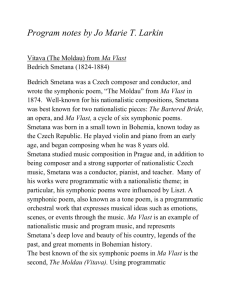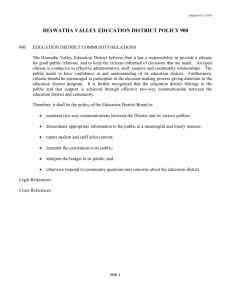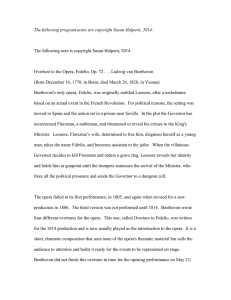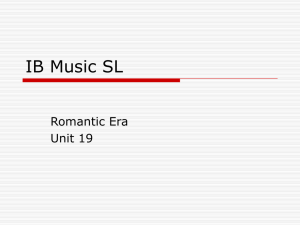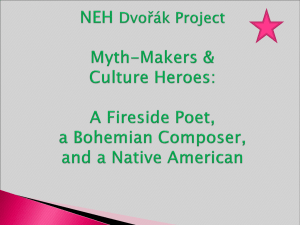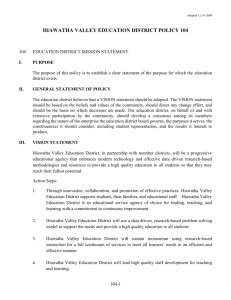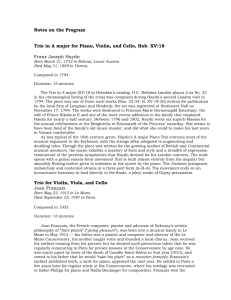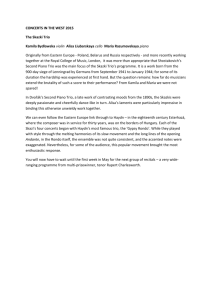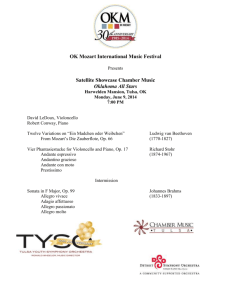Antonin Dvořák (1841
advertisement
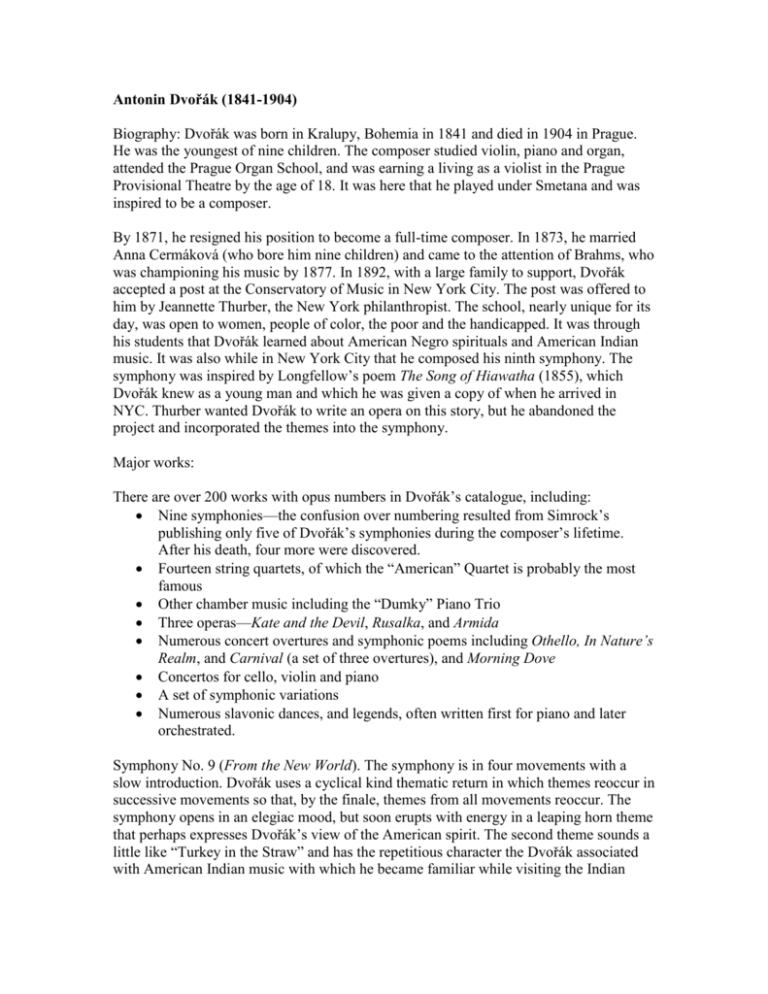
Antonin Dvořák (1841-1904) Biography: Dvořák was born in Kralupy, Bohemia in 1841 and died in 1904 in Prague. He was the youngest of nine children. The composer studied violin, piano and organ, attended the Prague Organ School, and was earning a living as a violist in the Prague Provisional Theatre by the age of 18. It was here that he played under Smetana and was inspired to be a composer. By 1871, he resigned his position to become a full-time composer. In 1873, he married Anna Cermáková (who bore him nine children) and came to the attention of Brahms, who was championing his music by 1877. In 1892, with a large family to support, Dvořák accepted a post at the Conservatory of Music in New York City. The post was offered to him by Jeannette Thurber, the New York philanthropist. The school, nearly unique for its day, was open to women, people of color, the poor and the handicapped. It was through his students that Dvořák learned about American Negro spirituals and American Indian music. It was also while in New York City that he composed his ninth symphony. The symphony was inspired by Longfellow’s poem The Song of Hiawatha (1855), which Dvořák knew as a young man and which he was given a copy of when he arrived in NYC. Thurber wanted Dvořák to write an opera on this story, but he abandoned the project and incorporated the themes into the symphony. Major works: There are over 200 works with opus numbers in Dvořák’s catalogue, including: Nine symphonies—the confusion over numbering resulted from Simrock’s publishing only five of Dvořák’s symphonies during the composer’s lifetime. After his death, four more were discovered. Fourteen string quartets, of which the “American” Quartet is probably the most famous Other chamber music including the “Dumky” Piano Trio Three operas—Kate and the Devil, Rusalka, and Armida Numerous concert overtures and symphonic poems including Othello, In Nature’s Realm, and Carnival (a set of three overtures), and Morning Dove Concertos for cello, violin and piano A set of symphonic variations Numerous slavonic dances, and legends, often written first for piano and later orchestrated. Symphony No. 9 (From the New World). The symphony is in four movements with a slow introduction. Dvořák uses a cyclical kind thematic return in which themes reoccur in successive movements so that, by the finale, themes from all movements reoccur. The symphony opens in an elegiac mood, but soon erupts with energy in a leaping horn theme that perhaps expresses Dvořák’s view of the American spirit. The second theme sounds a little like “Turkey in the Straw” and has the repetitious character the Dvořák associated with American Indian music with which he became familiar while visiting the Indian reservation near Spillville, Iowa during his summer vacations. The third theme (introduced by the flute) is “Swing Low, Sweet Chariot” without the opening measure. The second movement is directly inspired by Longfellow’s poem. This is “legendary” music intended to recount the journey of Hiawatha and Minnehaha through early America. Contrary to popular belief, the famous spiritual “Goin’ Home”, which appears in this movement as an English horn solo, is not a Negro spiritual. It is an original tune written by Dvořák for this symphony, but written in the style of the Negro spirituals which Dvořák learned in America, especially from his African-American student Harry Thacker Burleigh, who was a singer, pianist, violinist and composer. The dark middle section of this movement portrays Minnehaha’s death and Hiawatha’s anguish. An explosion of naturalistic music, with bird calls that Dvořák found in a book of American bird songs leading to a return of themes from the first movement, expresses rebirth of the spirit. The third movement is based on a scene from Hiawatha “Where the Indians Dance.” It depicts Hiawatha’s wedding feast. The opening theme is the dance of Pau-Puk-Keewis, who was Hiawatha’s foe. The next melody was originally a song by Hiawatha’s friend Chibiabos. Longfellow’s text reads: “Onaway, awake beloved, thou the wild flower of the forest, thou the wild bird of the prairie…” The Trio (middle section) depicts an event at the wedding, in which the story of Indians who are transformed into birds is told. The Finale is full of power and fury. Dvořák gave no specifics, but it has been speculated that this is the battle between Hiawatha and Pau-Puk-Keewis. Here, Dvořák introduces numerous new ideas and recounts all of the major ideas of the earlier movements. The work ends with powerful surges of music like a cataclysmic waterfall, followed by a glorious sunset.
